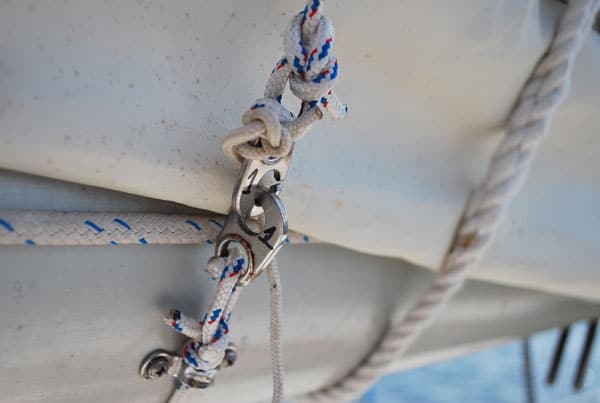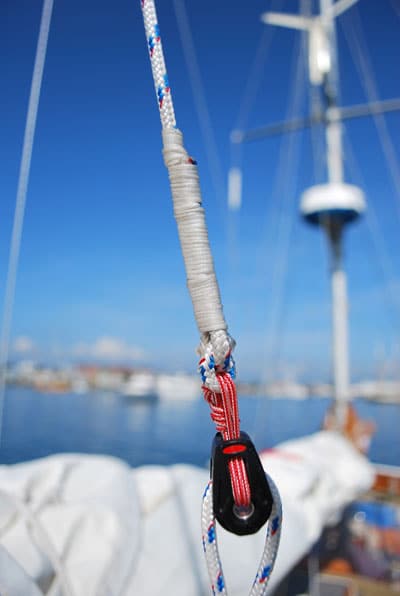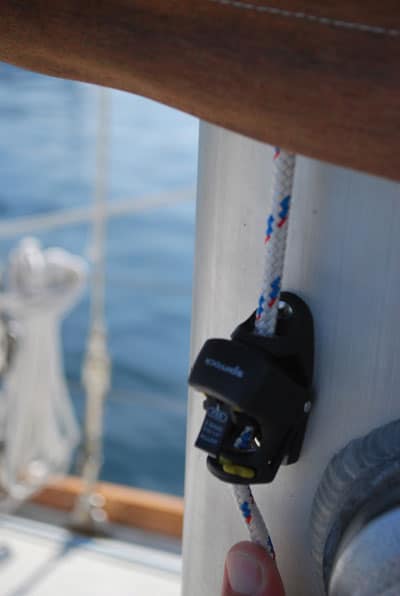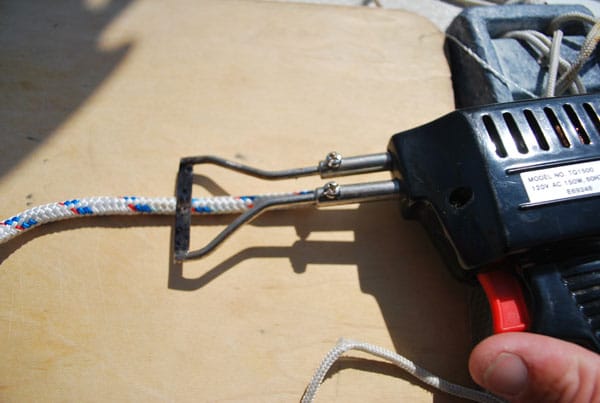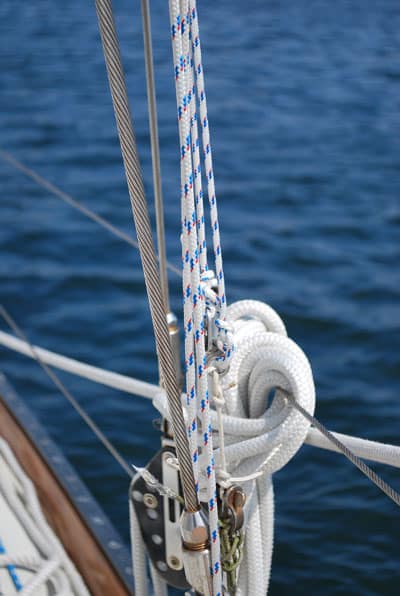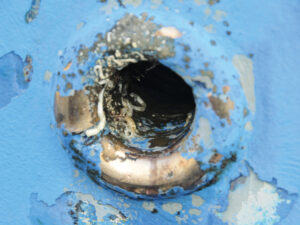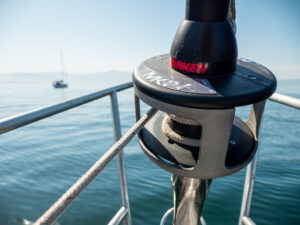Installing Lazy Jacks
In the glory days of sail, the British sailors were known as jack-tars, and with a flurry of shouted commands from the quarterdeck, they could have a huge sail furled or reefed in seconds. Today, forcibly pressing large numbers of civilians into low-paying servitude aboard your boat is generally frowned upon, so new methods have been developed to tame sails. One of the most important innovations for shorthanded sailing is, arguably, lazy jacks, so named because the sailor using them can simply let go of the halyard. The sail then drops into a nice basket on top of the boom ready for furling or reefing—no sail wrestling involved. As an added bonus, the person on the helm never has his or her vision blocked by the sail.
For our 44-foot Reliance ketch, Lyra, my wife, Jen, and I wanted a non-intrusive lazy jack system that could be quickly deployed, adjusted with one hand, and put safely away when not in use. We didn’t want to alter our existing sail cover, and we didn’t want the lazy jacks to chafe the sail.
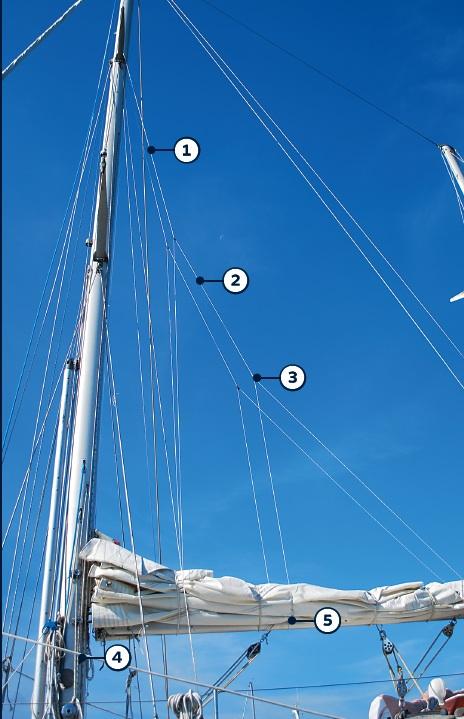
After a couple of hours of raising and lowering the main while mocking up the lazy jacks using parachute cord and halyards, we decided that three support lines did the job.
Each of the support lines is fastened to the boom just forward of the leech end of a batten; the sail should naturally land in the basket and shouldn’t hang on the support lines when it’s being raised. Each of the cheek blocks for the halyards aloft should be independently able to take the weight of the boom.
Materials and Costs
For the halyard on our lazy jack installation aboard Lyra, we used 55 feet each side (110 feet in total) of 1/4-inch braided Sta-Set X [1] , from New England Ropes, at a cost of $78. We used 42 feet each side (84 feet in total) of 3/16-inch braided Sta-Set X [2] for the support lines; this cost $45. The six 1/4-inch Orbit blocks [3] from Ronstan—we used three on each side—cost $72. The total cost of the two 1/4-inch Spinlock jammers [4] we used, one per side, was $84. The 12 Ronstan sister clips [5], used six to a side, cost $24. The total cost of our new lazy jack system? $303, along with six hours of labor, most of which we spent developing the right configuration. Miscellaneous items we used include whipping twine, a sewing needle, a hot knife, machine screws with appropriate taps, a drill, bits, and cutting oil for drilling and tapping.
Green Brett has been sailing and living aboard since childhood, and he currently shares his love of cruising through his company, On Watch Sailing charters and instruction, out of Newport, Rhode Island.
